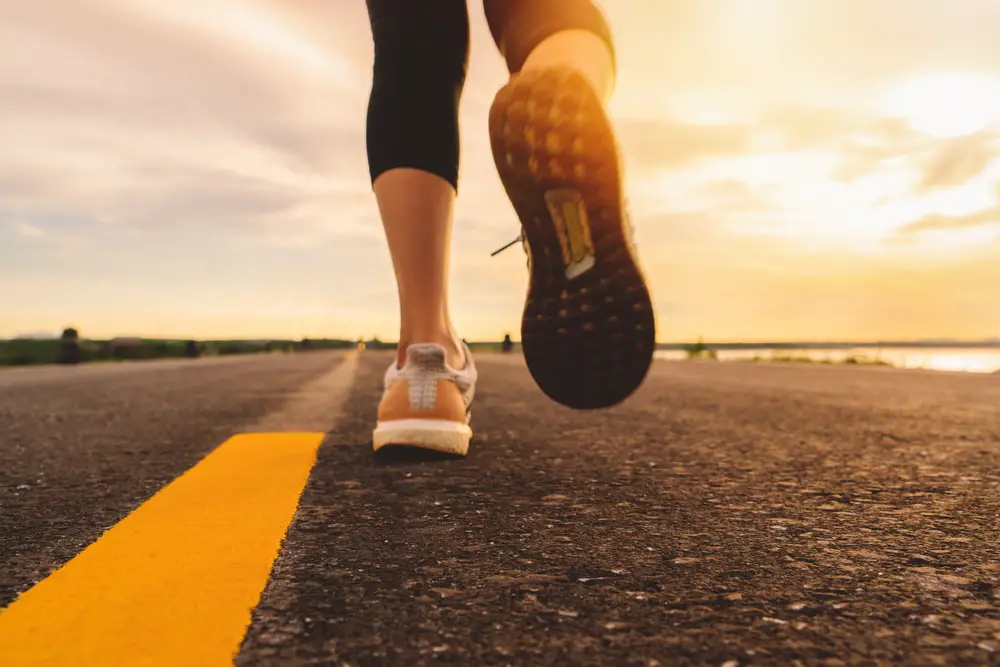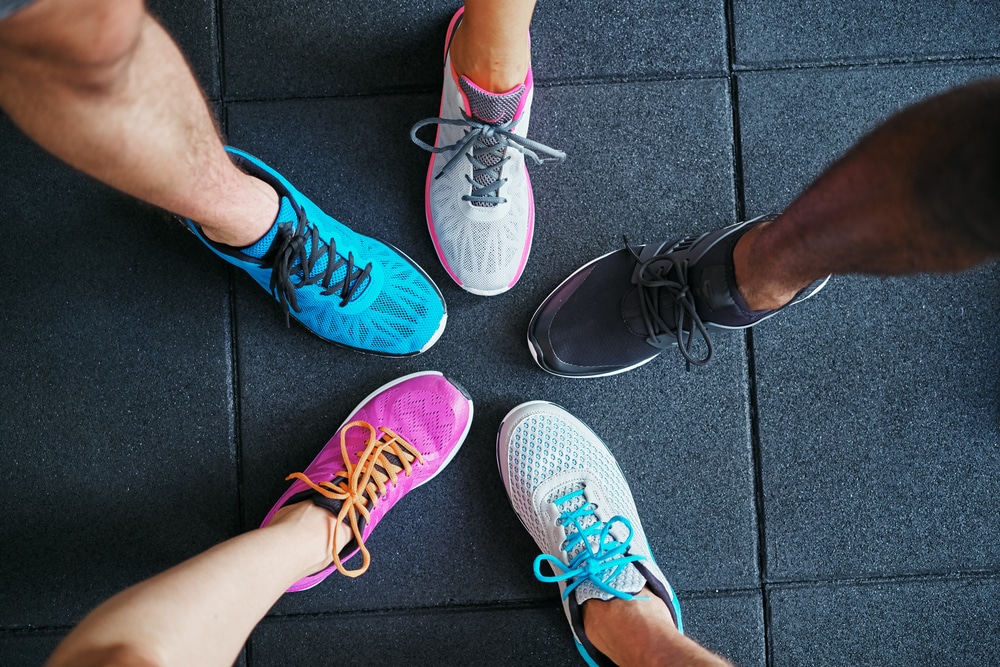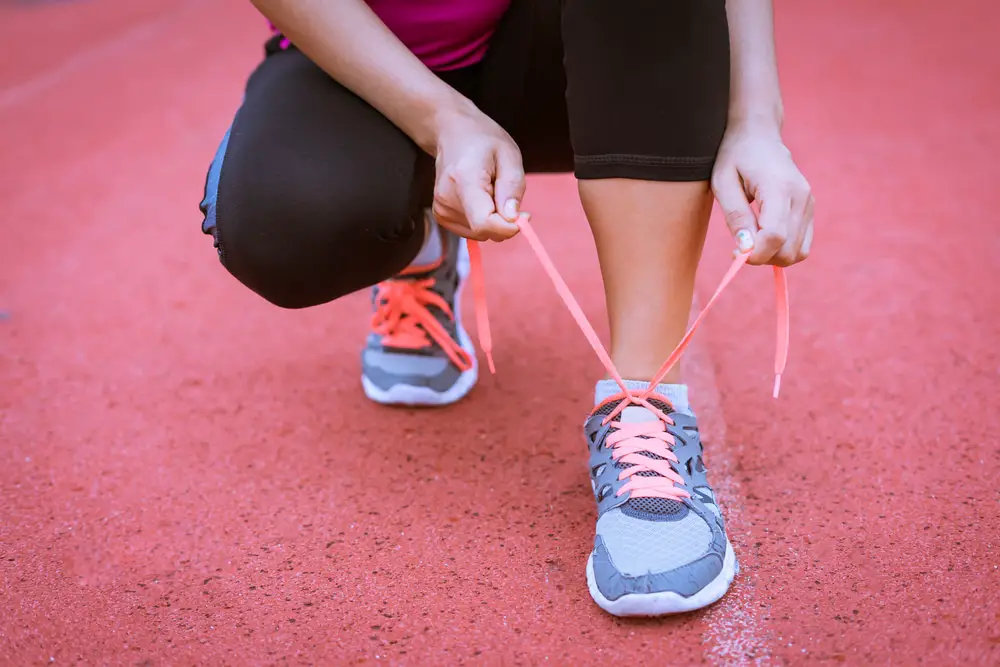While cushioning, support, tread, and weight are all critical factors to consider when choosing a new pair of running shoes, nothing is more important than fit.
Even if you purchase the best running shoes perfectly suited to your unique needs, they will cause more harm than good if they do not fit your feet properly. When your running shoes are too big or too small, your risk of developing painful blisters and bruises will skyrocket.
Not only can running shoes without the right fit cause blisters, but they can also significantly increase your risk of debilitating bone, joint, and muscle injuries. How should running shoes fit? We can help! This thorough guide will explain everything you need to know about finding a pair of running shoes that will fit properly to make your runs comfortable, enjoyable, and safe!
So, How Should Running Shoes Fit?
While fit is far less important when wearing a pair of casual sneakers, with running shoes, fit is critical. Running shoes are meant to be functional. For a running shoe to fit your feet properly, you will need to consider multiple factors, which we will explore.
Measuring Proper Fit Through the Toes
You will want roughly one inch of space between your big toe and the end of your running shoe. You should be able to insert your thumb behind your heel once you force your toes to the tip of your running shoe.
Many people mistakenly believe the best running shoes should be the exact length of your feet, as they think that wiggle room would cause blisters. The truth is, you should have some space in the toe box of the shoe, as this helps absorb some of the impact when your foot hits the pavement.
The cushioning created by extra wiggle room makes your landings much more forgiving, which can help reduce fatigue, muscle cramping, and the potential for injuries.
Measuring Proper Fit Through the Midfoot and the Heel
Next, you must ensure that the shoe has the proper width to accommodate your feet. Remember, some people have wider feet than others; however, few people consider this when shopping for new running shoes.
Your running shoes should have a snug fit at the midfoot and surrounding the heels, but they should not be tight enough that you experience any sort of pain or discomfort. You want the shoe to grip your feet and not slide when you step, but you also want the shoes to be easy to remove. If this is the case, the shoes are too tight, and you may need to look at a pair of wide-fit running shoes.

Other Things to Keep in Mind When Fitting Running Shoes
While making sure that your new running shoes are the correct length and width for your feet is incredibly important, you will also want to consider the following when assessing the fit of running shoes:
Wear the Correct Socks While Testing New Running Shoes
Make sure you wear running socks while trying on a new pair of running shoes. While it may seem somewhat trivial, the type of socks you wear can make a difference. Since you will ask a lot from your running shoes, you must have your true fit while trying them on.
Even a small fraction of an inch could impact how the running shoes fit your feet, so you want to ensure you are not wearing a thin dress sock or thick winter sock while trying them on.
Make Sure You Are Standing While Trying on New Running Shoes
While trying on new shoes in a seated position is natural, you want to ensure that you stand up while assessing the fit of a new pair of running shoes. Your feet will expand when you are standing. Not only does the standing position pull blood towards your feet, which can cause them to swell slightly, but the bones in your feet will also flatten and spread when your body weight is on them.
Again, this is important, as it will help ensure you get the perfect fit for your feet.
Measure Both of Your Feet
While it may sound a little strange, almost every person has feet that vary slightly in size. While the difference tends to be minute for most people, it can be pretty drastic for others.
Some professional runners wear running shoes custom-fitted to each foot; however, for most runners, you can simply wear a pair of running shoes that fit your larger foot. With that said, if the size difference between your feet is considerable, meaning more than a full shoe size, you may consider wearing different shoe sizes.
You can even speak with a professional podiatrist if the issue is causing you pain or distress. They will assess your feet and possibly recommend a podiatrist, a professional trained to modify footwear.
Consider Wearing Running Insoles
If you need help finding a pair of running shoes that fit right and feel comfortable, consider looking at running insoles.
These inner soles are purchased separately from running shoes and either sit on top of the shoe’s built-in insoles or fully replace them. Not only can they improve cushioning, warmth, and overall comfort, but the right set of running insoles can also provide your shoes with a better fit, as they elevate the foot, so it moves around less as you run.
If you would like to know more about running insoles and benefit from our informative buyer’s guide, we recommend taking a look at our review of The Best Insoles for Running.

How Can You Tell if Running Shoes Do Not Fit You Properly?
If you are wondering if a current pair of running shoes fit you properly, we recommend looking out for the following signs:
- Blisters on the Tops of Your Toes or Between Your Toes – If you notice blisters at the tops of your toes or any sort of blister or irritation between your toes, there is a good chance that your running shoes are too small for your feet.
When you run, your toes should be able to move without rubbing against the front of your shoe or each other. Your toes play a significant role in balancing you as your feet strike the pavement.
If your running shoes are too tight in length or width, there is a good chance your toes will become noticeably irritated. If the condition is allowed to worsen, you can even develop a condition known as runner’s toe, which can be pretty debilitating. Again, this is why you want to leave roughly one inch of space in the toe box of your running shoes.
- Blisters on the Balls of Your Feet – If you notice blisters and skin irritation along the balls of your feet, there is a good chance that your running shoes are too wide. Just like some people can have wide feet, others can have narrow feet.
If your running shoes are too wide, they could move from side to side when your feet contact the pavement. This sideways motion will irritate the skin and, eventually, lead to painful blisters, which could become so inflamed that it becomes difficult to continue running.
- Numbness in Your Toes, Especially After You Have Completed a Run – If you notice that your toes tingle or even feel completely numb, it is almost always a sign that your running shoes are too small for your feet.
If you notice this numbness during or after runs, take it seriously. It can eventually lead to severe pain and blood flow problems and even increase your likelihood of developing a debilitating injury. Essentially, this numbness, or tingling sensation, results from restricted blood flow through the foot. Since the shoes are too tight for your feet, oxygenated blood cannot reach your toes, which can lead to serious foot problems if allowed to continue.
- Blisters and Pain on the Heels of Your Feet – If you experience pain in any part of your heels while you run, it could be a sign that the heel cup of your running shoes is too wide. Unfortunately, this can be a brand issue, as certain running shoe brands are known to have wider heels than others.
ASICS, Saucony, and HOKA are all known for having wider heels, which could be good if you have a wider heel. However, if you have relatively narrow heels, you may opt for running shoes from one of the other reputable manufacturers, like Adidas, Nike, New Balance, or Puma.
While it could be an issue with the running shoes themselves, there is also a chance that you need to tie the laces of your running shoes tighter.
Final Thoughts
Fit is one of the most critical features of any pair of running shoes. Unfortunately, it is also one of the most overlooked features, as too many runners focus on style, brand loyalty, and other superficial features when shopping for new running shoes.
By taking the information mentioned above into consideration, you will be able to find a pair of running shoes perfectly fitted to your exact needs. If you want to know more about running shoes, we recommend visiting our Running Shoe Review Collection, which is packed with helpful information!


